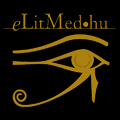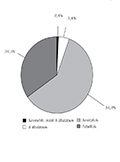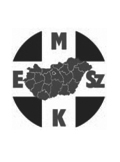The eLitMed.hu medical portal uses computer cookies for convenient operation. Detailed information can be found in the Cookie-policy.
Journal of Nursing Theory and Practice - 2014;27(01)
Content
[Examination of nursing students’s leisure activities and the most important elements of the their social support system ]
[Aim of the sudy: The aim of the examination is to show how and what kind of leisure activities the full-time and part-time nursing students spend their free-time. Also that social supportive system is in the centre which can provide help in case of occurence of mental and financial problems by its most important components. Sample and methods: The questionnaire survey was going on at the University of Szeged, Faculty of Health Sciences and Social Studies where the sample consisted of nursing students (N=208) both part-time (n=136) and full-time (n=72). Results: In connection with leisure activities it can be ascertained that the professional nursing students mainly prefer free and located spare time activities. The components of their social supportive system are especially informal ignoring professionism. Conclusions: By the achievements it can be established that a long-waited reform should be carried out in order that in consequence of higher incomes and a better organization of work the extended free-time serves and recreation indeed. In case of mental problems the professional assistants should receive places among the components of social supportive system. ]
[Attitudes to starting a family among students at Semmelweis University Faculty of Health Sciences]
[Aim of the study: To assess the willingness of students at the Faculty of Health Sciences of Semmelweis University, with respect to the preferred number of children and the planned date of the first birth. To gain an understanding of student attitudes in relation to motherhood and the role of the woman and the relevance of the traditional family model today. Further, to examine the differences in responses from students of the three specialist areas. Methodology and sample: The authors conducted the quantitative sociological survey, based on a self-completion questionnaire, among 2nd, 3rd and 4th year student nurses, student midwifes and student health visitors at the Semmelweis University Faculty of Health Sciences. The results were analysed with the SPSS 19.0 program, using a descriptive statistical method. The proportion of useful responses to the questionnaire was 94.1% (N=257). Results: The majority of the students planned to have children, at an average age of 26.5. The preferred number of children was two or three in most cases. The majority would like to start a family when married, and regard the daily caring for children as mainly the woman’s task, which shows support for the traditional family model. In their present/future circumstances, health visitors expressed a preference for motherhood in the highest numbers, and nurses in the lowest numbers (p=0.,012). Conclusions: The student nurses, midwives and health visitors at the Faculty of Health Sciences clearly plan to start families in the future. They have a traditional attitude towards the maternal role, but putting these ideas into practice is made more difficult by their paramedical vocation. Nurses and midwives, in particular, are in danger of a conflict of roles in their future lives, for reasons such as the shift working and secondary jobs. ]
[Can be taught first aid for children 5-6 years old?]
[Aims of the study: Basic Life Saving Activities should be thought in early childhood in order to base helping aptitude for adulthood. The authors’s aim was to teach kindergarten children for basic first aid duties and than to examine their results. Sample and methods: 51 children were involved in the survey. There was two sessions with theoretical and practical games about first aid. On the third session children were tested about their skills and one month later re-tested. The statistical analyses were made with SPSS 17.0 software. Results: The maximum point of the test was 38 points. The average point of the first test was 16,94 points and the re-test score was higher. The difference between the results was significant (p<0,05). The results showed attitudinal differences between boys and girls (p<0,05). Conclusions: The 5 and 6 years old children of kindergarten can learn the basic concepts. ]
[Oriental dance as rehabilitation method of malignant neoplastic diseases]
[Belly dance is perceived as the symbol of the healthy, young and beautyful woman. However when the history of this ancestral dance is studied, it can be seen, that certain movements are applied in healing, furthermore it is employed in some oriental countries until nowadays. Women patients with cancer diseases are suffering both from physical damage and psychical trauma after a resective surgery. Their self-image and self-respect are disturbed, which in several cases leads to isolation, social segregation and at last to disability. Based on literary data cancer caused disability shows an intensely increasing tendency. As an own initiation Százszorszép Hastáncklub (Moonflower Belly Dance Club) hase been established in 2005, which is developed to an ocological rehabilitation method. This method integrates the elements of movement, music andd dance therapie. In addition, it provides a supportive community to the companions. Our examinations confirmed the efficiency of the method. Significant development was demonstrated in the field of social support, quality of life and life-contentment.]
[Occupational Health Nursing in the Netherlands: Study Trip Review]
[In October 2012 the author had the opportunity to spend 4 days in the Netherlands on a study trip. The purpose of the trip was to exchange information about the nursing education facilities and the tasks of Occupational Health Nurses in the Netherlands. The study tour supported by the Federation of Occupational Health Nurses within the European Union. Although the length of the trip was relatively short, the impact and exposure it brought to the author was definitely enormous. ]
1.
Clinical Neuroscience
[Headache registry in Szeged: Experiences regarding to migraine patients]2.
Clinical Neuroscience
[The new target population of stroke awareness campaign: Kindergarten students ]3.
Clinical Neuroscience
Is there any difference in mortality rates of atrial fibrillation detected before or after ischemic stroke?4.
Clinical Neuroscience
Factors influencing the level of stigma in Parkinson’s disease in western Turkey5.
Clinical Neuroscience
[The effects of demographic and clinical factors on the severity of poststroke aphasia]1.
2.
Clinical Oncology
[Pancreatic cancer: ESMO Clinical Practice Guideline for diagnosis, treatment and follow-up]3.
Clinical Oncology
[Pharmacovigilance landscape – Lessons from the past and opportunities for future]4.
5.







